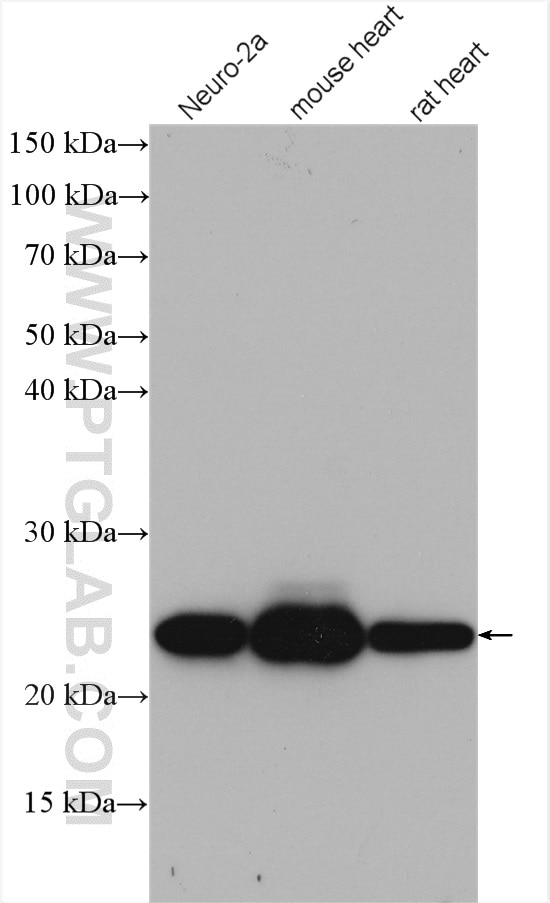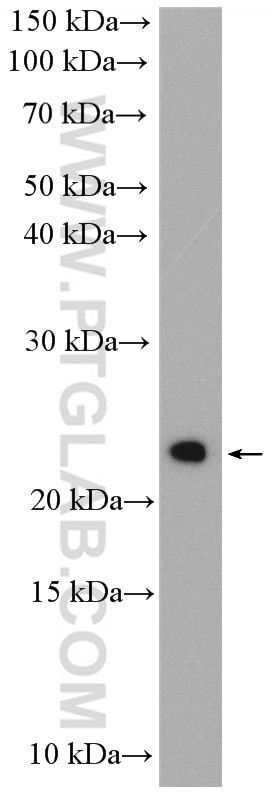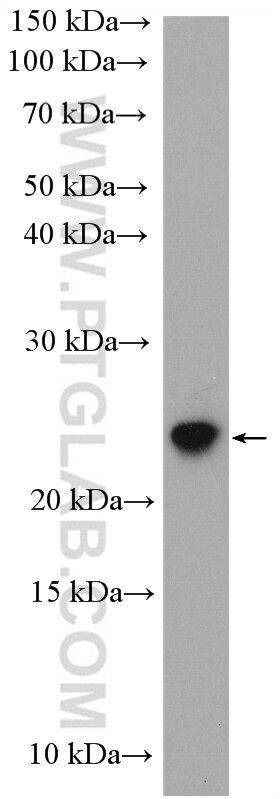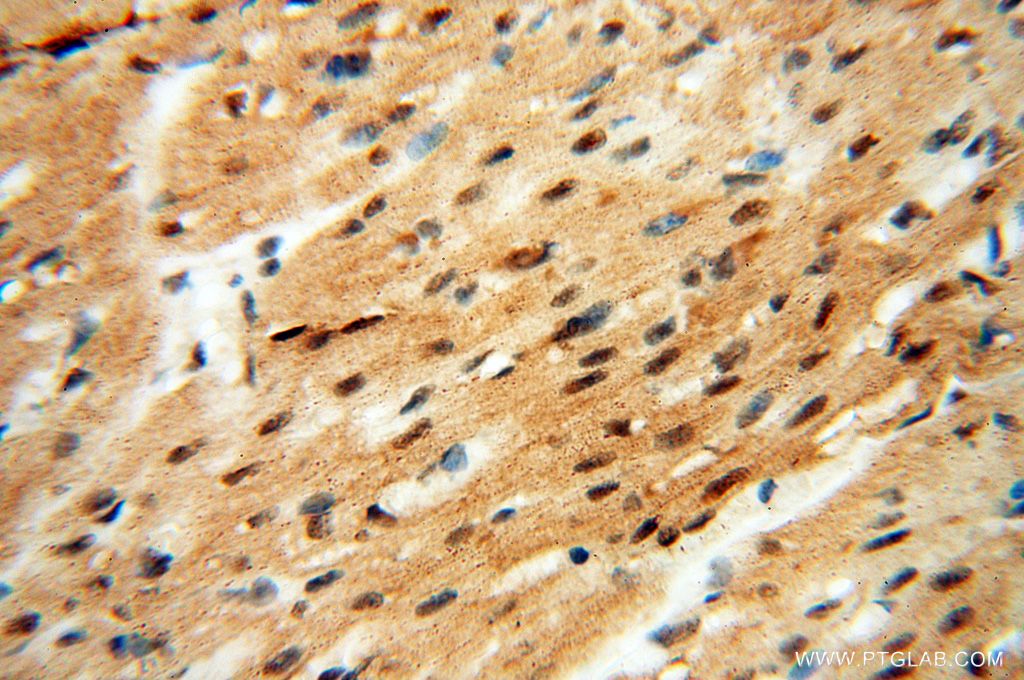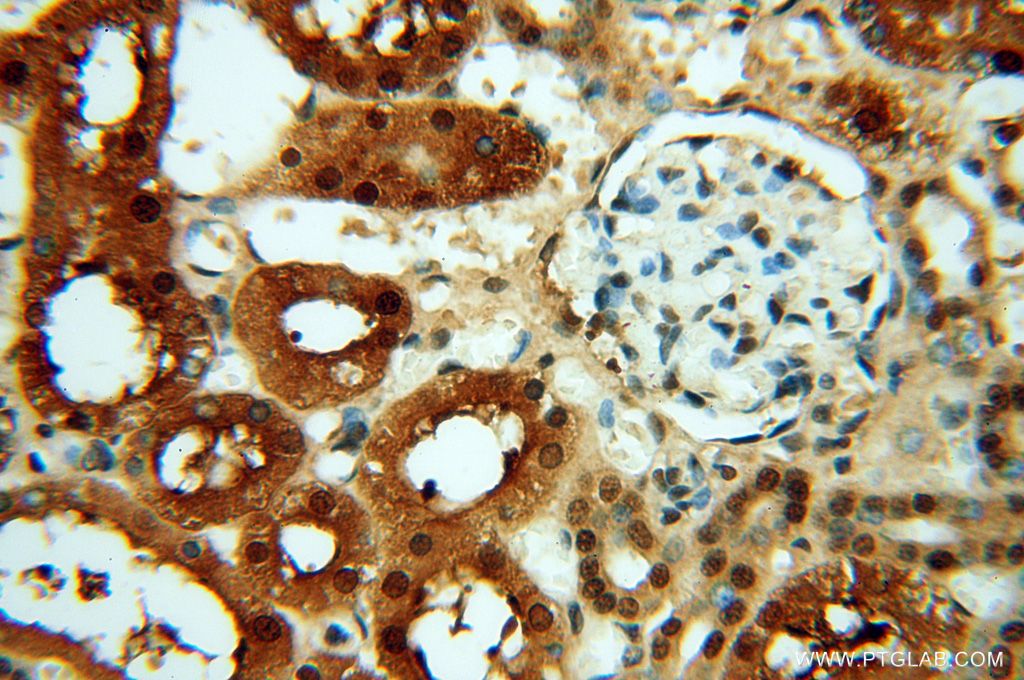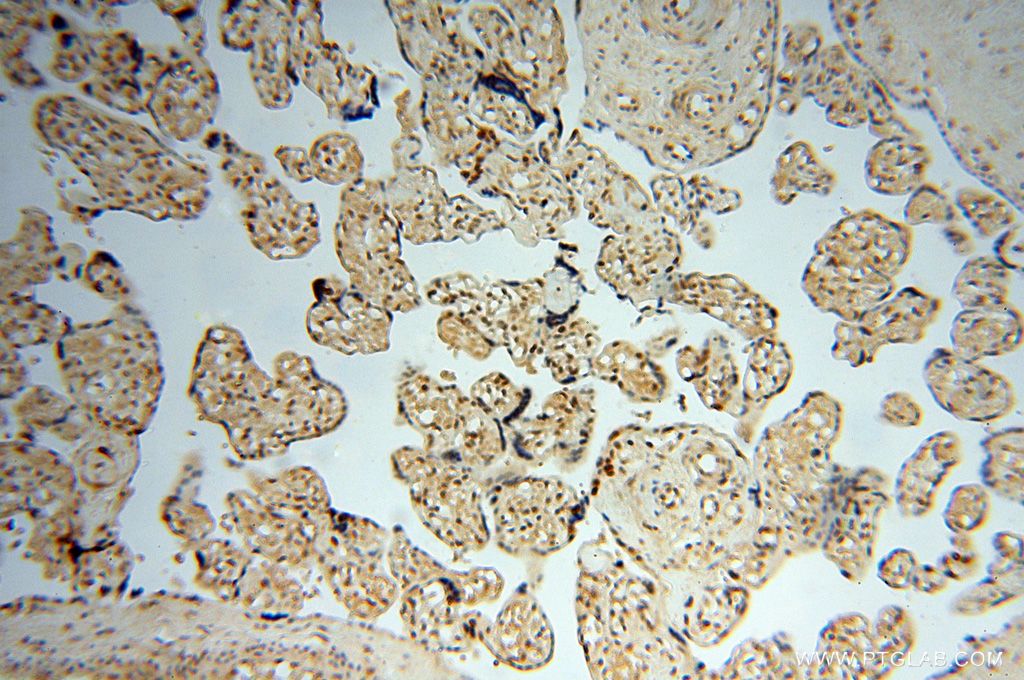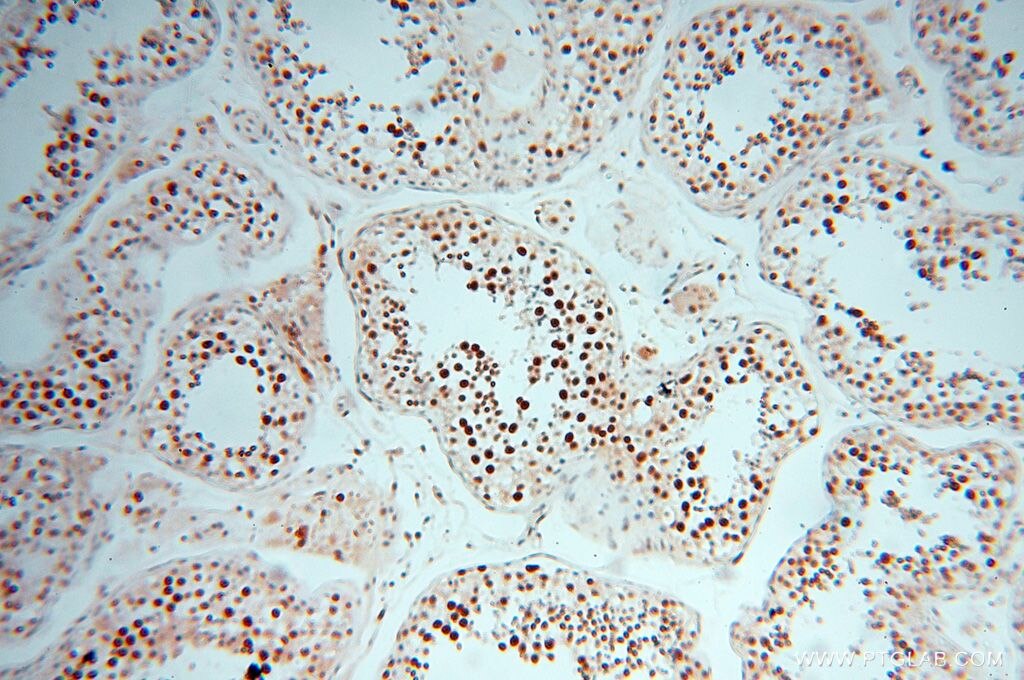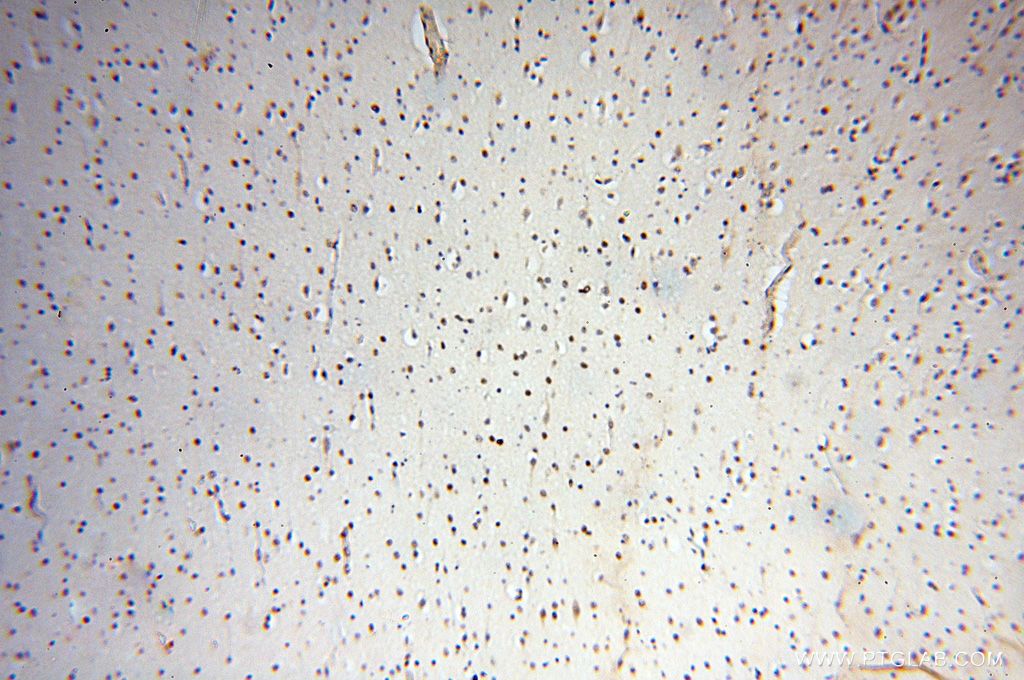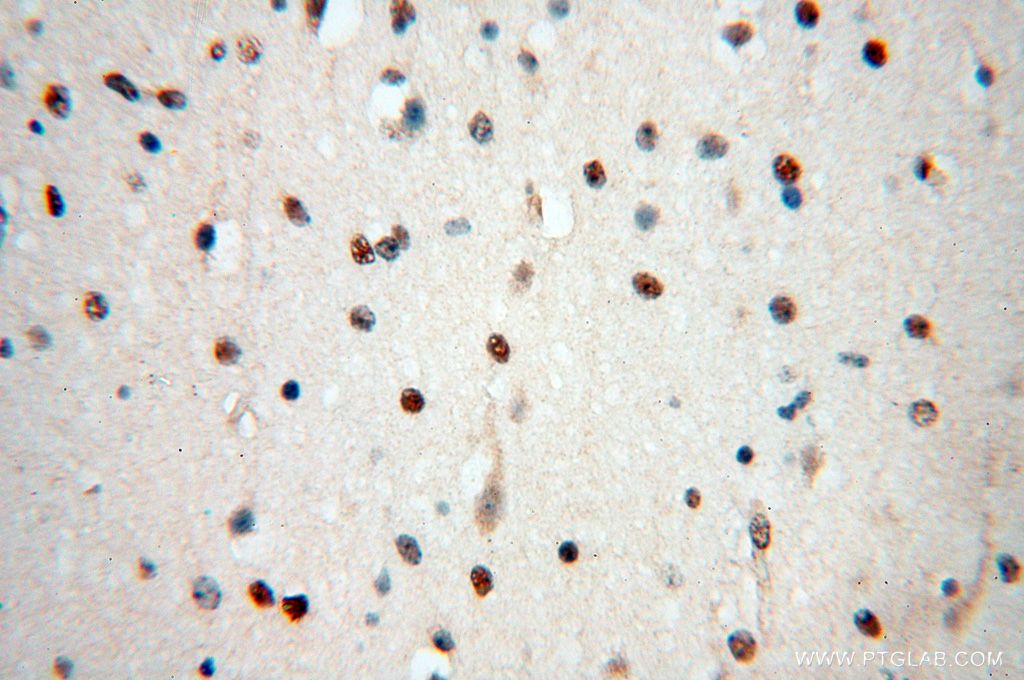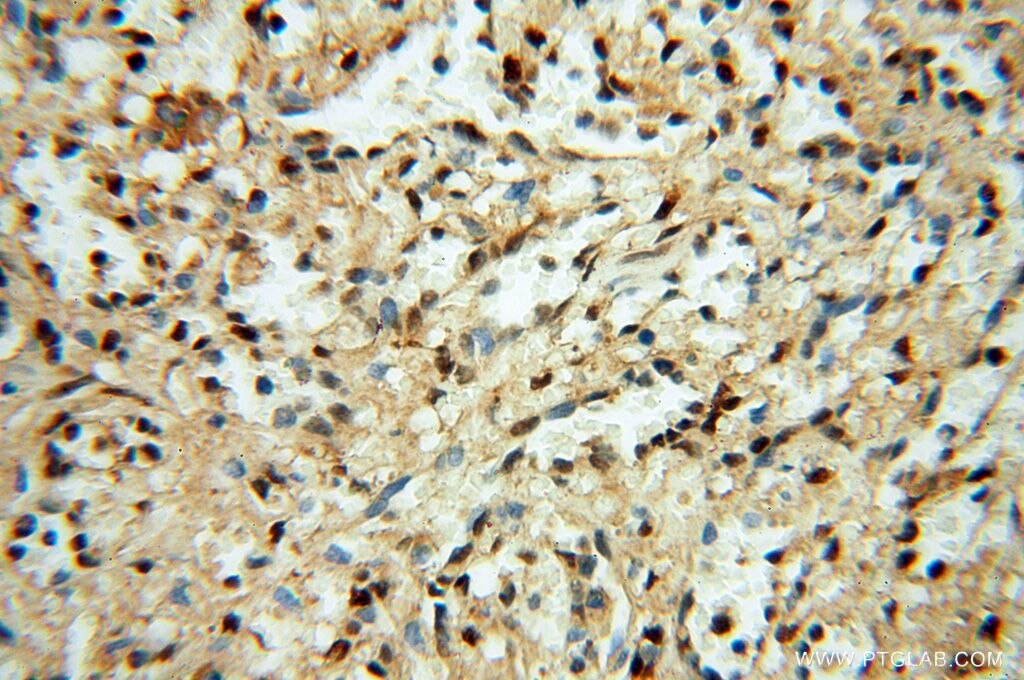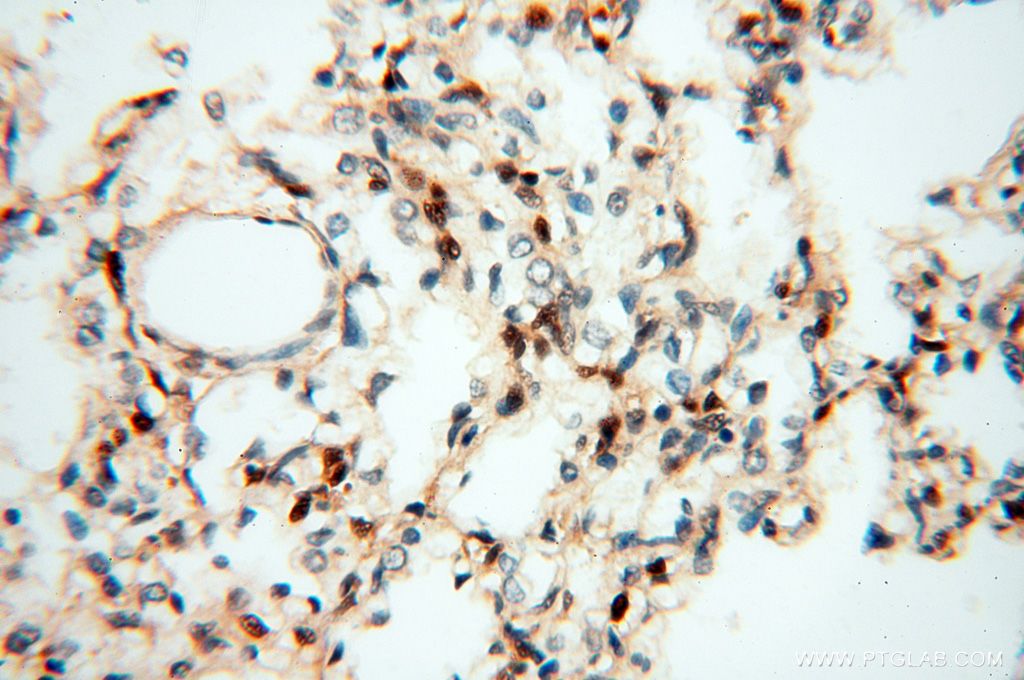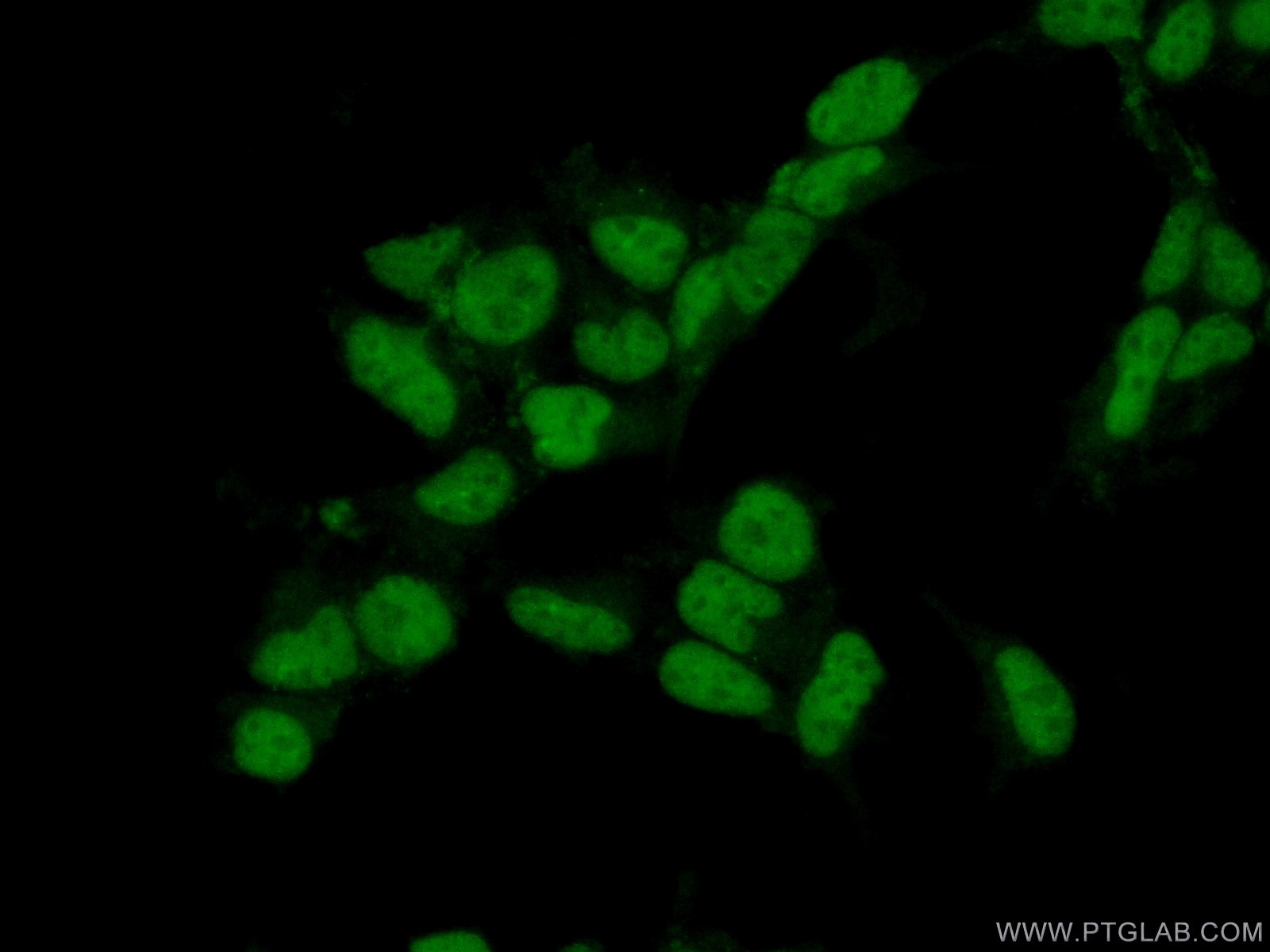Anticorps Polyclonal de lapin anti-HSPB8
HSPB8 Polyclonal Antibody for WB, IHC, IF/ICC, ELISA
Hôte / Isotype
Lapin / IgG
Réactivité testée
Humain, rat, souris
Applications
WB, IHC, IF/ICC, CoIP, ELISA
Conjugaison
Non conjugué
N° de cat : 15287-1-AP
Synonymes
Galerie de données de validation
Applications testées
| Résultats positifs en WB | cellules Neuro-2a, cellules HEK-293, cellules SGC-7901, tissu cardiaque de rat, tissu cardiaque de souris, tissu cérébral de souris |
| Résultats positifs en IHC | tissu cardiaque humain, tissu cérébral humain, tissu cutané humain, tissu ovarien humain, tissu placentaire humain, tissu pulmonaire humain, tissu rénal humain, tissu splénique humain, tissu testiculaire humain il est suggéré de démasquer l'antigène avec un tampon de TE buffer pH 9.0; (*) À défaut, 'le démasquage de l'antigène peut être 'effectué avec un tampon citrate pH 6,0. |
| Résultats positifs en IF/ICC | cellules HEK-293 |
Dilution recommandée
| Application | Dilution |
|---|---|
| Western Blot (WB) | WB : 1:500-1:3000 |
| Immunohistochimie (IHC) | IHC : 1:20-1:200 |
| Immunofluorescence (IF)/ICC | IF/ICC : 1:50-1:500 |
| It is recommended that this reagent should be titrated in each testing system to obtain optimal results. | |
| Sample-dependent, check data in validation data gallery | |
Applications publiées
| WB | See 12 publications below |
| IHC | See 2 publications below |
| IF | See 1 publications below |
| CoIP | See 2 publications below |
Informations sur le produit
15287-1-AP cible HSPB8 dans les applications de WB, IHC, IF/ICC, CoIP, ELISA et montre une réactivité avec des échantillons Humain, rat, souris
| Réactivité | Humain, rat, souris |
| Réactivité citée | Humain, souris |
| Hôte / Isotype | Lapin / IgG |
| Clonalité | Polyclonal |
| Type | Anticorps |
| Immunogène | HSPB8 Protéine recombinante Ag7456 |
| Nom complet | heat shock 22kDa protein 8 |
| Masse moléculaire calculée | 22 kDa |
| Poids moléculaire observé | 20-22 kDa |
| Numéro d’acquisition GenBank | BC002673 |
| Symbole du gène | HSPB8 |
| Identification du gène (NCBI) | 26353 |
| Conjugaison | Non conjugué |
| Forme | Liquide |
| Méthode de purification | Purification par affinité contre l'antigène |
| Tampon de stockage | PBS with 0.02% sodium azide and 50% glycerol |
| Conditions de stockage | Stocker à -20°C. Stable pendant un an après l'expédition. L'aliquotage n'est pas nécessaire pour le stockage à -20oC Les 20ul contiennent 0,1% de BSA. |
Informations générales
The Heat Shock Protein B8 (HSPB8), also named small stress protein-like protein (sHSP22), protein kinase H11(H11), E2-induced gene 1 protein (E2IG1), or alpha-crystallin C chain (CRYAC), is a small chaperone involved in chaperone-assisted selective autophagy (CASA) (PMID: 33562660). HSPB8 is expressed at relatively high levels in the heart and the skeletal muscle tissue. HSPB8 is composed of 196 amino acids with an apparent molecular mass of 21.6 kDa (PMID: 20570967).
Protocole
| Product Specific Protocols | |
|---|---|
| WB protocol for HSPB8 antibody 15287-1-AP | Download protocol |
| IHC protocol for HSPB8 antibody 15287-1-AP | Download protocol |
| IF protocol for HSPB8 antibody 15287-1-AP | Download protocol |
| Standard Protocols | |
|---|---|
| Click here to view our Standard Protocols |
Publications
| Species | Application | Title |
|---|---|---|
Nat Commun Cardiomyocyte contractile impairment in heart failure results from reduced BAG3-mediated sarcomeric protein turnover. | ||
J Neurosci The α crystallin domain of small heat shock protein b8 (Hspb8) acts as survival and differentiation factor in adult hippocampal neurogenesis. | ||
J Am Heart Assoc Reduction of Filamin C Results in Altered Proteostasis, Cardiomyopathy, and Arrhythmias | ||
J Cell Biochem Pharmacological inhibition of BAG3-HSP70 with the proposed cancer therapeutic JG-98 is toxic for cardiomyocytes. | ||
Genes (Basel) BAG3 Alleviates Atherosclerosis by Inhibiting Endothelial-to-Mesenchymal Transition via Autophagy Activation. | ||
Cell Rep Stress-induced perturbations in intracellular amino acids reprogram mRNA translation in osmoadaptation independently of the ISR. |
